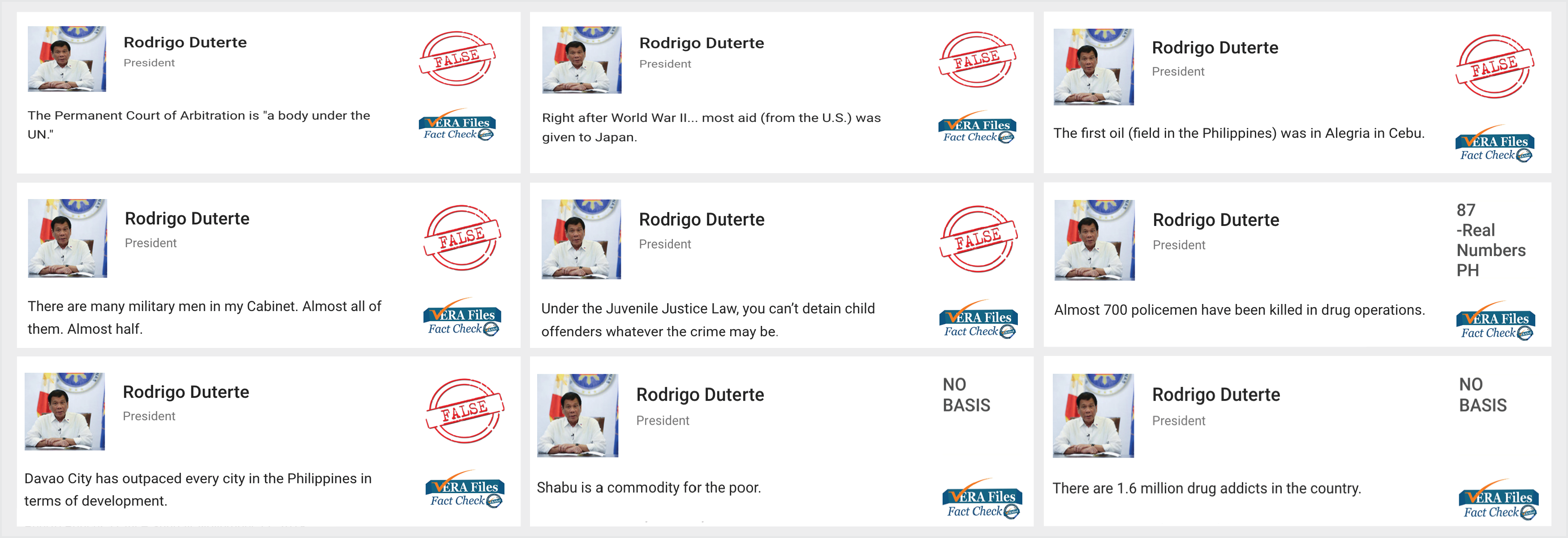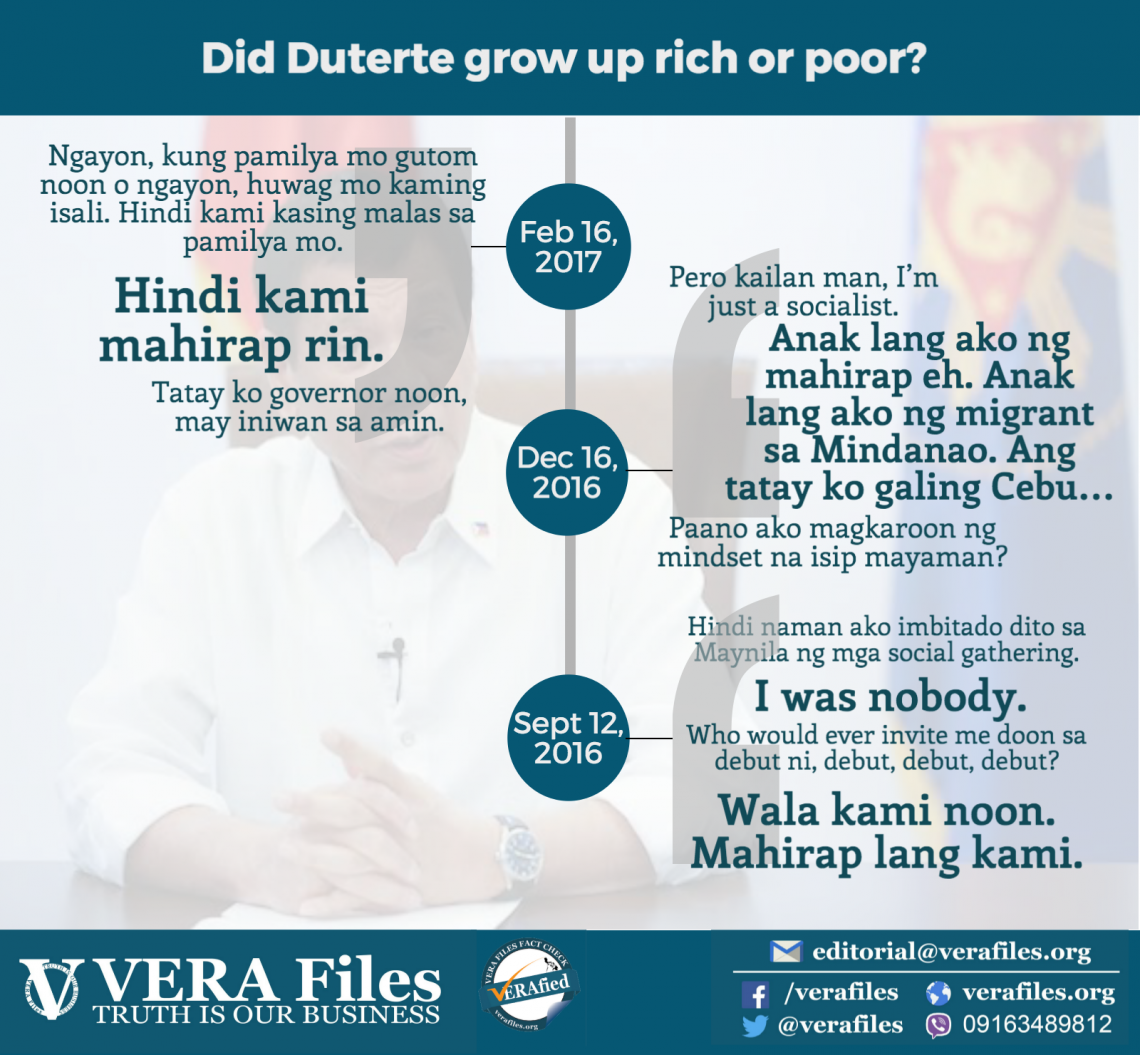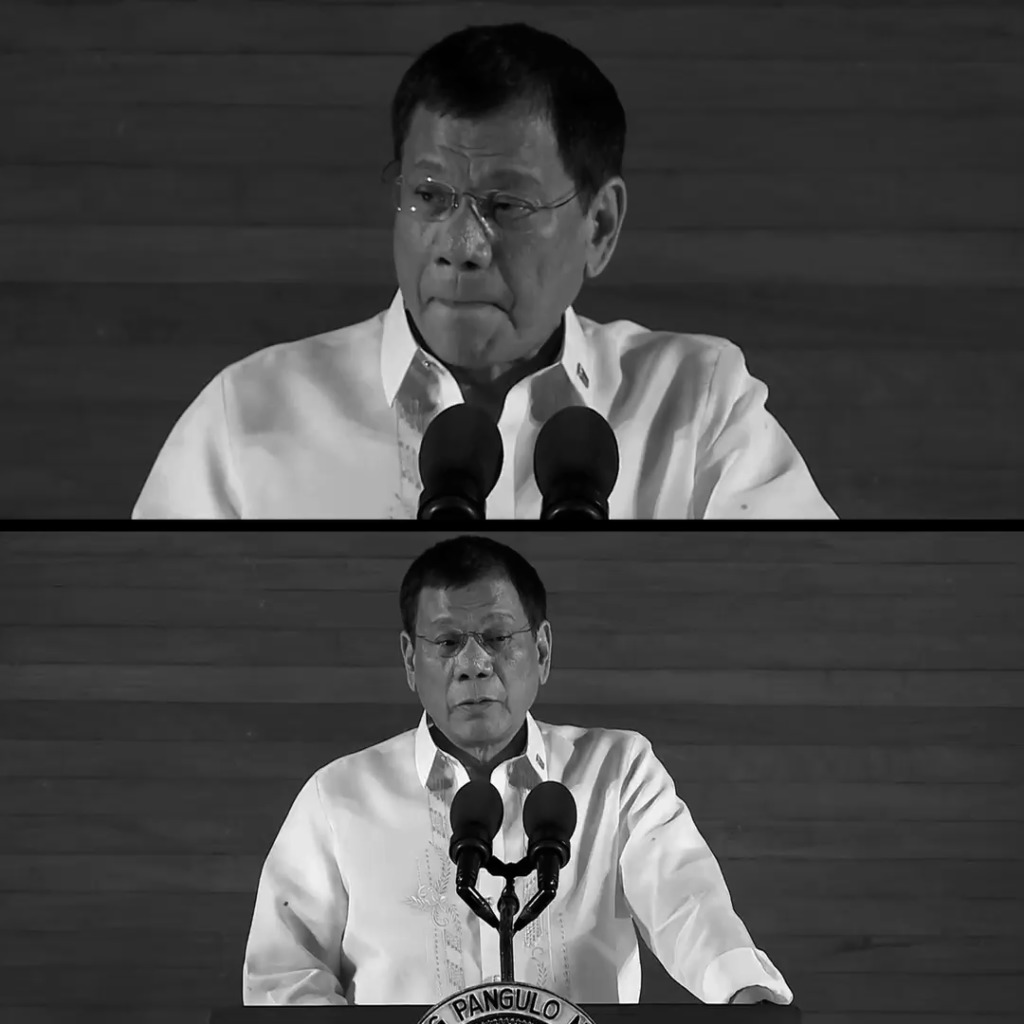President Rodrigo Duterte made at least nine false claims in an 86-minute speech earlier this week, some of which VERA Files has previously debunked.
Duterte, during the 1st Subaraw Biodiversity Festival in Puerto Princesa City, again deviated from script and ranted about drugs, crime, oil fields and World War II, among others.
We fact-check each of the president’s claims.
On the Permanent Court of Arbitration
Statement:
“But International Court says- sa Court of Arbitration, that’s a body under the UN, nanalo kami (we won).”
Source: Speech of President Rodrigo Duterte during the 1st Subaraw Biodiversity Festival, Nov. 11, Puerto Princesa City, watch from 18:21 to 19:06
Fact:
The Permanent Court of Arbitration (PCA) is not a United Nations body, and only operates in the same building as the UN International Court of Justice at the Peace Palace in the Hague, Netherlands.
The PCA, created in 1899 by the Convention for the Pacific Settlement of International Disputes, precedes the UN, established in 1945, by almost five decades.
Several news reports quote a UN statement that the PCA has “nothing to do with the UN” following the latter’s ruling in favor of the Philippines in the South China Sea dispute mid-2016.
On post-World War II aid
Statement:
“Right after World War II, kakaanak lang natin (we had just been born), every country involved that war- every country was preparing to discover natural resources to fund its rehabilitation aside from the money of the Americans.
But most of it, the aid, was given to Japan. Maybe for their atonement of their guilt sa (in) Hiroshima pati (and) Nagasaki.”
Source: watch from 21:07 to 21:38
Fact:
Duterte could not have been right. United States Agency for International Development (USAID) data show that for a period of six years right after World War II, the U.S. poured $7.6 billion (or $65.49 billion in 2016) in aid for the United Kingdom, $6.6 billion (or $52.78 billion) for France, almost $4.3 billion (or $35.39 billion) for Germany, $3.5 billion (or $29.47 billion) for Italy, while only about $2.2 billion (or $18.46 billion) for Japan.
These amounts cover financial flows from grants and loans by USAID and various economic and military aid initiatives by the U.S. from 1946 to 1952.
Among the initiatives Japan benefited from are the the 1946-1947 Government and Relief in Occupied Areas program, which Germany was also under, and the 1948-1949 Economic Rehabilitation in Occupied Areas program. It also reportedly received about $845 million from the 1949-1952 Dodge Plan, which would bring Japan’s total to about $3 billion — still less than that of the four European countries.
The UK, France, Germany and Italy received a larger amount because of the 1948 Marshall Plan, America’s $12 billion (equivalent to more than $100 billion in 2016) economic rehabilitation program for Western Europe.
On the Philippines’ first oil field
Statement:
“Ang Pilipinas hindi binigyan ng Panginoong Diyos (God did not bless the Philippines with oil). That the first oil (field) na ‘yung ganun talaga (of its kind) was in Alegria in Cebu. I cried. Tumalikod ako kasi nakakaawa ang bayan ko (I felt sorry for my country).”
Source: watch from 23:14 to 23:21
Fact:
The Alegria Oilfield in Cebu that Duterte inaugurated in May is not the first in the Philippines, but Nido in the northwest Palawan Shelf, which began commercial production as early as 1979.
On military men in his Cabinet
Statement:
“Baka sabihin niyo diktador ako, kasi maraming military sa Cabinet. Well, almost all of them. Hati na halos. (You might say I’m a dictator because there are many military men in my Cabinet. Well, almost all of them. Almost half).”
Source:
watch from 33:14 to 33:22
Fact:
At least six, not half, of the 28-member Duterte Cabinet based on an Official Gazette list joined the military.
They are Defense Secretary Delfin Lorenzana, National Security Adviser Hermogenes Esperon, Social Welfare Secretary Rolando Joselito Bautista, Environment Secretary Roy Cimatu, Interior and Local Government Secretary Eduardo Ano, Information and Communications Technology Eliseo Rio.
On juvenile justice
Statement:
Referring to the Juvenile Justice and Welfare Act of 2006, of which Sen. Francis “Kiko” Pangilinan was a main proponent, Duterte said:
“Mag-isip lang kayo noon pa hindi pa panahon sa batas ni Pangilinan at ngayon…Hindi mo talaga ma-detain ang bata (Just compare the time before Pangilinan’s law was passed to now. You really can’t detain child offenders) whatever the crime may be. It could even be genocide. Walang sasagutin (They won’t answer to anything).
Source: watch from 44:12 to 44:33
Fact:
The Juvenile Justice and Welfare Act of 2006 states that child offenders aged 15 to 18 who “acted with discernment” are not exempt from criminal liability and “shall be subjected to the appropriate proceedings.”
An amendment of the law in 2013 requires 12- to 15-year-olds who commit serious crimes such as parricide, murder, rape or robbery with homicide to be placed in a “Bahay Pag-asa,” an intensive juvenile intervention and support center.
On policemen killed in drug operations
Statement:
“Almost 700 na pulis napatay. Basahin mo ‘yung newspaper araw-araw. Meron ‘yan dalawa, tatlo (Almost 700 policemen have been killed. Read the newspaper every day. There are two, three [policemen killed]).“
Source: watch from 51:56 to 52:08
Fact:
Duterte has revised his claim anew. In August, Duterte said 1,000 police officers have been killed in the war on drugs.
Both figures aren’t supported by the latest available Real Numbers PH figures, the official government data on the war on drugs, which shows 87 law enforcers killed from July 1, 2016 to July 31, 2018.
Duterte’s count of law enforcers lost daily to the drug war varies from “two to three” to “three to four” to “six to eight.” (See VERA FILES FACT CHECK: Duterte’s grim portrait of war on drugs is not supported by gov’t data and VERA FILES FACT CHECK: ‘Real Numbers PH’ update contradict Duterte’s claim)
On Davao City’s economic growth
Statement:
“Punta ka ng Davao ngayon (Go to Davao now), it has outpaced every city in the Philippines in terms of development. It’s hitting nine point something percent sa economic growth–domestic, local.”
Source: watch from 55:39 to 55:59
Fact:
This is the fourth time by VERA Files Fact Check’s count that Duterte exaggerated Davao City’s economic performance (See VERA Files Fact Check: Duterte wrong about Davao City’s financial figures–again, VERA Files Fact Check: Duterte repeats wrong claim about Davao City’s economic growth, and VERA Files Fact Check: Is Davao City’s economic growth unprecedented?).
Government data on economic growth is disaggregated by region, not by city. Duterte was again most likely referring to Davao Region’s 9.4 percent growth in 2016, which was surpassed by Eastern Visayas at 12.4 percent and Central Luzon at 9.5 percent.
On drugs the rich and poor use
Statement:
Duterte defended the drug war, which has claimed the lives of mostly poor people, and rehashed his most repeated claim in 2017 that methamphetamine or shabu use is limited to the poor:
“You know, shabu is a commodity for the poor…Alam mo diyan sa mamatay diyan sa Tondo puro mahirap. Ang mga mayaman pati dito sa—dito. Cocaine. (Those who get killed in [the drug war] in Tondo are poor. The rich here use cocaine).”
Source: watch from 47:58 to 50:28
Fact:
A nationwide Dangerous Drugs Board (DDB) survey released in 2016 found that Duterte’s oft-repeated claim on methamphetamine or shabu being limited to the poor and cocaine to the rich has no statistical basis.
The study, which determined the nature and extent of drug use in the Philippines, found that “no clear distinction is revealed in terms of… whether prevalence is inversely or directly proportional to income level.” (See VERA FILES FACT CHECK: Shabu use not limited to poor–DDB survey).
On the number of drug addicts in the country
Statement:
“Imagine kung Bato, 1.6 confirmed. So you are reducing one million six of my countrymen to slavery. And what is that? Slavery to a drug called shabu, which they cannot–no more escape from because shabu shrinks the brain.”
Source: watch from 56:40 to 57:13
Fact:
Duterte has repeatedly revised his figures on Filipino drug addicts. His previous estimates have gone as high as 4 million drug users before settling for 1.6 million.
The DDB survey said there were 1.8 million current drug users in the country (See VERA Files Fact Check: Shabu use not limited to poor –DDB survey).
Sources:
PCOO, Speech of President Rodrigo Duterte during the 1st Subaraw Biodiversity Festival, Puerto Princesa City, Nov. 11, 2018
PCA
- Permanent Court of Arbitration, History
- United Nations, History
- South China Morning Post, United Nations stresses separation from Hague tribunal, July 14, 2016
- Inquirer.net, Arbitral court not a UN agency, July 14, 2016
- Business Standard, UN Court reaffirms ‘no-link’ to South China Sea arbitral tribunal, July 16, 2016
WWII
- Archived U.S. Department of State website, Marshall Plan, 1948.
- Takagi, S., From Recipient to Donor: Japan’s Official Aid Flows, 1945 to 1990 and Beyond, Essays in International Finance, Princeton University, March 1995, pp. 7
- U.S. Agency for International Development (USAID), Complete Dataset, U.S. Overseas Loans and Grants: Obligations and Loan Authorizations, July 1, 1945–September 30, 2016, n.d.
Oil field
- PCOO, Speech of President Rodrigo Roa Duterte during the ceremonial opening of oil and and gas production of the Alegria Oil Field Polyard 3 well site, May 19, 2018.
- DOE, Energy sector milestones
- DOE, Oil and gas history
- DOE, Duterte, Cusi inaugurate commercial production of Cebu oilfield, May 20, 2018.
Military men
- International Telecommunications Union, Eliseo M. Rio’s application for DICT secretary
- Official Gazette, Chief of Staff of the Armed Forces of the Philippines
- Official Gazette, Profile: Major Gen. Eduardo M. Ano
- Official Gazette Facebook page, List of Cabinet Secretaries of President Rodrigo Duterte
- DAR, Secretary’s Profile: John R. Castriciones
- DENR, DENR Secretary Roy A. Cimatu
- DND, The Secretary
- PCOO, President Duterte appoints new cabinet members
Juvenile justice
- Official Gazette, Republic Act 9344
- Senate of the Philippines, Republic Act 10630
Economic growth
- Philippine Statistics Authority, Gross Regional Domestic Product, May 2017
(Guided by the code of principles of the International Fact-Checking Network at Poynter, VERA Files tracks the false claims, flip-flops, misleading statements of public officials and figures, and debunks them with factual evidence. Find out more about this initiative and our methodology.)




